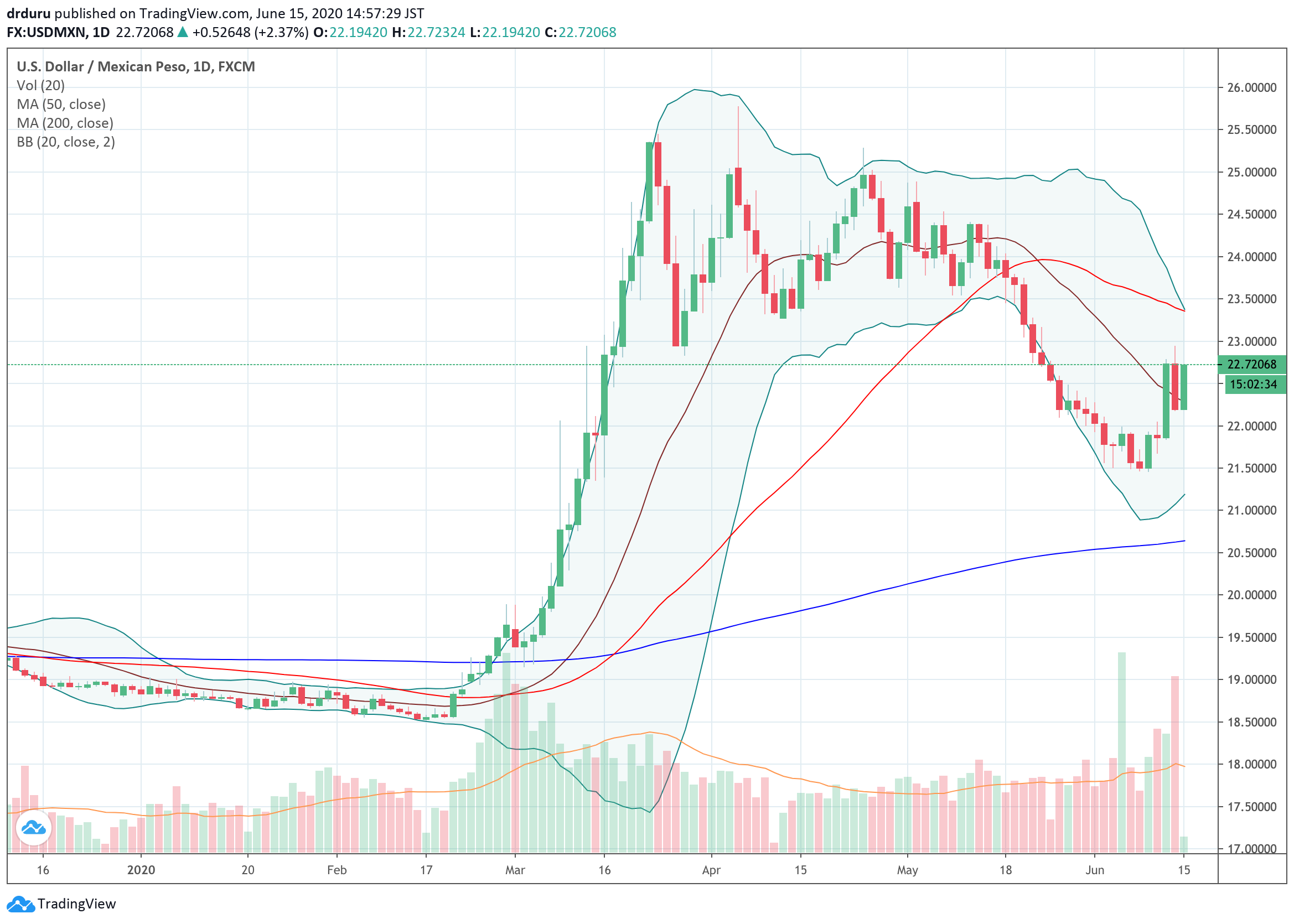The U.S. dollar index (DXY) continues to pivot around its 200-day moving average (DMA). Last week, the U.S. dollar bounced before retesting the lows from March. The U.S. dollar now looks ready to challenge its 200DMA as resistance; it will likely complete another cycle by rallying at least to the previous highs above the 200DMA.

Source: TradingView.com
Assuming the U.S. dollar hit a bottom after its latest 200DMA breakdown, then all currency pairs with the U.S. dollar are subject to impact. Perhaps the biggest impact will be felt in “emerging currencies.”
Bargain shoppers emerged in the currency pairs of emerging markets during the recovery from the financial market meltdowns in March. That bargain shopping was persistent and sustained until it came to an abrupt end last week.
The moves in currencies like the Mexican peso (USD/MXN) and South African (USD/ZAR) reflect a sudden reversal in risk appetites.

Source: TradingView.com

Source: TradingView.com
The 20DMAs define the current downtrends in these currency pairs, but renewed momentum in the U.S. dollar will likely invalidate those downtrends in short order. This reversal in risk appetites will also challenge my current short-term (cautiously) bullish trading call for the U.S. stock market.
The June 10th bottom in the U.S. dollar index coincided with the U.S. Federal Reserve’s last statement on monetary policy. Chairman Jerome Powell made it abundantly clear that the economy is nowhere near the clear and that more stimulus would likely be needed (emphasis mine):
“The extent of the downturn and the pace of recovery remain extraordinarily uncertain and will depend in large part on our success in containing the virus. We all want to get back to normal, but a full recovery is unlikely to occur until people are confident that it is safe to reengage in a broad range of activities. The severity of the downturn will also depend on the policy actions taken at all levels of government to provide relief and to support the recovery when the public health crisis passes.”
The consideration and delivery of this stimulus will happen in the context of a heated political environment in the U.S. where partisan divides are now overlaid with racial and civil unrest. The risks are high that fiscal policy will fail in this environment. So if the Fed is worried about the sustainability of the nascent economic recovery in the U.S., imagine the fragility of emerging economies. Suddenly, the U.S. dollar looks “cheap.”
In South Africa, the Tourism Business Council of South Africa (TBCSA) is pushing for a September 1st relaunch of the travel and tourism industry. This aggressive move flies in the face of earlier predictions South Africa could not normalize this industry until early 2021. Revenues from travel and tourism will be a key part of South Africa’s recovery story.
In Mexico, the coronavirus pandemic is actually picking up steam and threatens more lives and livelihoods. This emergence will likely stall the plans of adventurous tourists who are now trying to plan getaways from the U.S. which is reopening its economy. Tourism and travel is also important to Mexico. According to Yahoo!Entertainment, tourism is 8.7% of Mexico’s GDP (gross domestic product) and includes 4.5M jobs. Only 86,000 foreigners visited Mexico in April, a mere trickle compared to the 2.8M who visited in April, 2019.
Despite the reemergence of risks, I am holding emerging currency positions as part of a longer horizon view. I want to continue collecting carry over this time. I hope to bridge the gap with timely trades in other currencies that reflect risk aversion, especially going long the Japanese yen (FXY). I am bracing for both USD/MXN and USD/ZAR to rebound back to 50DMA resistance before bargain shoppers re-emerge.
Be careful out there!
Full disclosure: long and short various positions against the U.S. dollar, short USD/MXN, short USD/ZAR, long the Japanese yen
